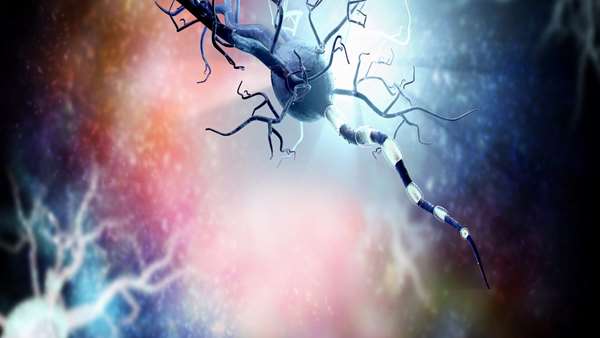An RNA-targeting CRISPR-Cas13d technology has been used to eliminate the RNA transcript that encodes the toxic protein that causes Huntington’s disease (HD). The technology, which was developed by researchers based at the University of California (UC) San Diego School of Medicine, was shown to alleviate HD symptoms in mouse models. Detailed findings appeared in Nature Neuroscience.
The article noted that using an RNA-targeting CRISPR enzyme may be safer than using a DNA-targeting CRISPR enzyme. If an RNA-targeting CRISPR enzyme were to cause negative side effects, its administration could be halted, and the side effects would likely be reversible. However, a DNA-targeting CRISPR enzyme could cause irreversible nonspecific and unintended modifications in the patient’s genome.
The RNA targeted by the San Diego team was the mutant RNA (and the mutant protein) that accumulates when a mutant version of the huntingtin (HTT) gene is expressed. Because the mutant HTT gene contains an unusually large number of repeats of a particular DNA segment—namely, the CAG segment—the mutant RNA that results is ultimately translated into an unusually large huntingtin protein. The protein is cut into fragments that stick together and accumulate in neurons, disrupting their function.
Burdened by the toxic buildup of protein fragments, neurons in certain areas of the brain die and give rise to HD’s signs and symptoms—progressive loss of movement, coordination, and cognitive function. More than 200,000 people worldwide live with the genetic condition, approximately 30,000 in the United States. More than a quarter of a million Americans are at risk of inheriting HD from an affected parent. There is no cure.
“Our cells have a hard time copying repetitive DNA, and these copying errors can cause repetitive sequences to grow longer with each generation,” said Gene Yeo, PhD, the senior author of the Nature Neuroscience article and a professor of cellular and molecular medicine at UC San Diego School of Medicine. “In the Huntingtin gene, these repeats can sometimes grow to many times their normal length, with the resulting repeat-expanded protein tending to aggregate and form toxic clumps in a part of the brain called the striatum that is important for regulating movement. The loss of functional neurons in the striatum ultimately leads to HD symptoms.”
With colleagues at UC Irvine and Johns Hopkins University, Yeo and his team investigated whether recently described RNA-targeting CRISPR technology could be used to target the mutant RNA associated with HD. They developed a mutant allele-sensitive CAGEX RNA-targeting CRISPR-
Cas13d system (Cas13d–CAGEX) that eliminates toxic CAGEX RNA in fibroblasts derived from patients with HD and induced pluripotent stem cell-derived neurons. They also tested whether intrastriatal delivery of Cas13d–CAGEX via an adeno-associated viral vector would selectively reduce mutant HTT mRNA and protein levels in a mouse model of HD.
The investigators presented their results in an article titled, “An RNA-targeting CRISPR-Cas13d system alleviates disease-related phenotypes in Huntington’s disease models.”
“[Intrastriatal delivery of Cas13d-CAGEX] led to improved motor coordination, attenuated striatal atrophy, and reduction of mutant HTT protein aggregates,” the article’s authors wrote. “These phenotypic improvements lasted for at least eight months without adverse effects and with minimal off-target transcriptomic effects. Taken together, we demonstrate proof of principle of an RNA-targeting CRISPR–Cas13d system as a therapeutic approach for HD, a strategy with implications for the treatment of other dominantly inherited disorders.”
Essentially, the investigators found that their approach not only targeted and destroyed mutant RNA molecules, but also cleared out toxic protein buildup. They also demonstrated that expression of other human genes was generally not disrupted by the therapy.
“Our goal was to engineer a type of therapy that would only target the toxic RNA that causes HD and could keep the rest
of the human genome and transcriptome intact,” said co-first author Kathryn Morelli, PhD, a research fellow in Yeo’s lab. “We specifically screened our top therapeutic constructs in HD patient cell lines to make sure of it.”
Development of effective therapies for HD has proven challenging. In 2021, for example, two clinical trials for promising gene therapies were halted following disappointing results performance. Both potential drugs had been touted as game-changers for HD. Currently, no treatments can alter the course of the disease, though medications can lessen some symptoms.
“The Huntington’s community was devastated when the clinical trials failed, primarily due to target specificity and toxic effects,” said Yeo. “But their termination has only re-energized the scientific community to find alternative strategies.”




ارسال به دوستان